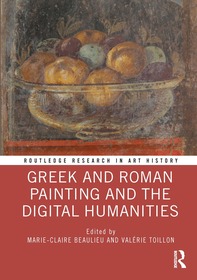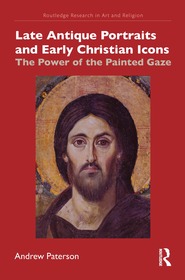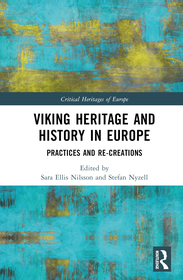
Greek and Roman Painting and the Digital Humanities
Series: Routledge Research in Art History;
- Publisher's listprice GBP 39.99
-
19 105 Ft (18 195 Ft + 5% VAT)
The price is estimated because at the time of ordering we do not know what conversion rates will apply to HUF / product currency when the book arrives. In case HUF is weaker, the price increases slightly, in case HUF is stronger, the price goes lower slightly.
- Discount 20% (cc. 3 821 Ft off)
- Discounted price 15 284 Ft (14 556 Ft + 5% VAT)
Subcribe now and take benefit of a favourable price.
Subscribe
19 105 Ft

Availability
Estimated delivery time: In stock at the publisher, but not at Prospero's office. Delivery time approx. 3-5 weeks.
Not in stock at Prospero.
Why don't you give exact delivery time?
Delivery time is estimated on our previous experiences. We give estimations only, because we order from outside Hungary, and the delivery time mainly depends on how quickly the publisher supplies the book. Faster or slower deliveries both happen, but we do our best to supply as quickly as possible.
Product details:
- Edition number 1
- Publisher Routledge
- Date of Publication 27 May 2024
- ISBN 9781003092797
- Binding Paperback
- No. of pages204 pages
- Size 246x174 mm
- Weight 508 g
- Language English
- Illustrations 50 Illustrations, black & white; 50 Halftones, black & white; 2 Tables, black & white 565
Categories
Short description:
This volume is a groundbreaking discussion of the role of digital media in research on ancient painting, and a deep reflection on the effect of digital media in opening the field to new audiences.
MoreLong description:
This volume is a groundbreaking discussion of the role of digital media in research on ancient painting, and a deep reflection on the effectiveness of digital media in opening the field to new audiences.
The study of classical art always oscillates between archaeology and classics, between the study of ancient texts and archaeological material. For this reason, it is often difficult to collect all the data, to have access to both types of information on an equal basis. The increasing development of digital collections and databases dedicated to both archaeological material and ancient texts is a direct response to this problem. The book’s central theme is the role of the digital humanities, especially digital collection,s such as the Digital Milliet, in the study of ancient Greek and Roman painting. Part 1 focuses on the transition between the original print version of the Recueil Milliet and its digital incarnation. Part 2 addresses the application of digital tools to the analysis of ancient art. Part 3 focuses on ancient wall painting.
The book will be of interest to scholars working in art history, classics, archaeology, and digital humanities.
MoreTable of Contents:
1 Introduction: The Digital Milliet, Between Ancient Painting and Digital Technologies Part 1 From the Recueil Milliet to the Digital Milliet 2 Adolphe Reinach and the Modernity of the Recueil Milliet 3 Commenting the Digital Milliet: From the Print to the Digital Version 4 The Digital Milliet: Development and Roadmap 5 Dire le Décor Antique (DDA): When Greek and Latin Texts meet Realia Part 2 Applying Digital Tools to the Analysis of Ancient Art 6 Enhancing Digital Publications with Alpheios 7 Texts on Artifacts: How to Improve Epigraphic Publication in a Digital Ecosystem 8 Danaids at Rest: Images in Context, Images in Networks: New Keys for the Study of Italiote Funerary Eschatology: Methods, Tools and Initial Results Part 3 Ancient Wall Painting 9 How Were Roman Wall Paintings Made? Material and Textual Evidence 10 Surface and Suggestion: The Materiality of Curtains in Roman Wall Painting 11 Adsere Caelo: Gladiators, Pictorial Space and Visual Culture in Pompei 12 Conclusion
More






